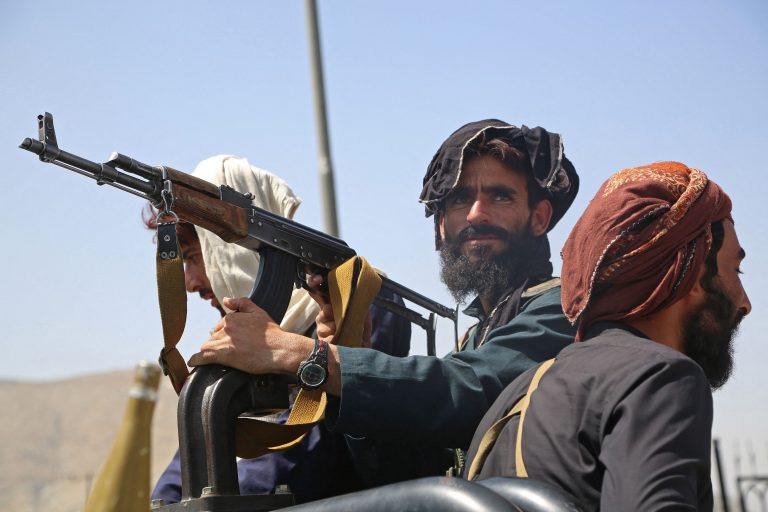Following the deadly suicide bombings at Kabul’s airport on August 26 that left at least 100 people dead including 13 U.S. Marines, ISIS-K and its rivalry with the Taliban has taken center stage in the ongoing conflict.
ISIS-K has claimed responsibility for the coordinated suicide bombings and gun assault that ripped through Kabul’s airport on Thursday just days after the Biden administration warned that the group — an affiliate of the Islamic State group operating in Afghanistan — was “seeking to target the airport and attack U.S. and allied forces and innocent civilians.”
The attack has had ripple effects across the globe and has even resulted in U.S. forces and Taliban fighters working together to implement defense strategies against the Islamic extremists; a circumstance that would have been panned as absurd mere days ago.
Who is ISIS-K?
The Ismlamic State Khorasan Province, also known by the acronyms ISIS-K, ISKP and ISK, is the official affiliate of the Islamic State that is operating in Afghanistan and is recognized by the Islamic State core leadership in Iraq and Syria.
The terrorist organization was officially founded in January 2015 and shortly after its creation managed to consolidate territorial control in several rural districts in the north and northeast areas of Afghanistan. After establishing its territory, the terrorists then led a punishing campaign across Afghanistan and Pakistan.
Success
You are now signed up for our newsletter
Success
Check your email to complete sign up
Within the terrorist organization’s first 3 years of operation they launched attacks against minority groups, public areas and institutions as well as government targets in major cities across both Afghanistan and Pakistan.
In 2018 the terrorist group had become one of the top four deadliest terrorist organizations in the world, according to the Institute for Economics and Peace’s Global Terrorism Index.
“Substantial evidence shows that the group has received money, advice, and training from the Islamic State group’s core organizational body in Iraq and Syria. Some experts have placed those figures in excess of $100 million.” Khon2 reported.
It is believed that ISIS-K’s strategy is to establish a beachhead, or an area in hostile territory that has been occupied and is held to allow additional fighters and supplies to enter, in order to expand its claimed caliphate into Central and South Asia.
It’s goal is to cement itself as the foremost jihadist organization in the Middle East by appealing to and recruiting veteran jihadist fighters.
It is said that the group’s ultimate goal is to create chaos and uncertainty in a bid to attract disillusioned fighters from other jihadist groups into its ranks and to cast doubt on any established government’s ability to provide security for the population.
The group is accused of targeting minorities like Afghanistan’s Hazara and Sikh populations. They are also known to target journalists, aid workers, security personnel and government infrastructure.
Following the surrender of over 1,400 of its fighters and their families to the Afghan government and U.S.-led coalition in late 2019 and early 2020, the organization was declared, by some, to be defeated.
ISIS-K and the Taliban
The Afghan Taliban has been branded by ISIS-K as “filthy nationalists” with ambitions to focus on forming a government in Afghanistan only. This approach contradicts the Islamic State’s overall goal of establishing a global caliphate.
Since its establishment in 2015 ISIS-K has continually tried to recruit Afghan Taliban fighters while also targeting Taliban positions throughout the country.
ISIS-K has enjoyed some success in this regard despite its positions being targeted and attacked by Taliban fighters. Many of the attacks on ISIS-K positions were in tandem with U.S. and Afghan forces that heavily depended on airstrikes by U.S. forces.
It’s understood that many of the military losses that ISIS-K incurred were as a direct result of U.S. and Afghan-led operations.
Is ISIS-K a real threat?
Despite ISIS-K’s successful suicide bombing attack on the Kabul airport, experts believe the organization’s ranks have been severely depleted and that it’s primary goal is to replenish its ranks partially through high profile attacks like what occurred on Thursday.
ISIS-K’s goal may be to carry out more high profile attacks to ensure the group does not become an irrelevant player in the Afghanistan-Pakistan landscape.
The terrorist organization will be interested in attacking U.S. and allied partners abroad, but its ability to do so is believed to be severely hampered.
The group’s ability to hit targets in Afghanistan however is extremely high. The group is expected to continue to target international aid workers, journalists and peace groups that engage in land-mine removal efforts. Political targets will also be a focus of the terrorist organization. For instance, in January 2021 ISIS-K attempted to assassinate the top U.S. envoy to Kabul.
It’s still too early to determine the full extent of the threat the terrorist organization poses however in the short-term they will likely continue its efforts to sow panic and chaos and to disrupt the withdrawal process for Afghan nationals.
Ultimately they will strive to demonstrate that the newly established Taliban government is incapable of providing a safe environment for Afghan citizens.
















